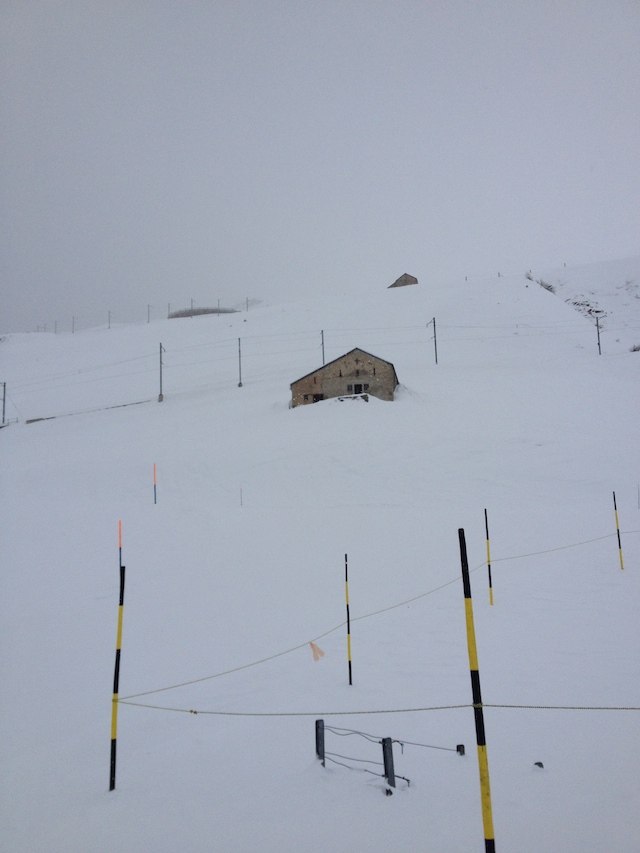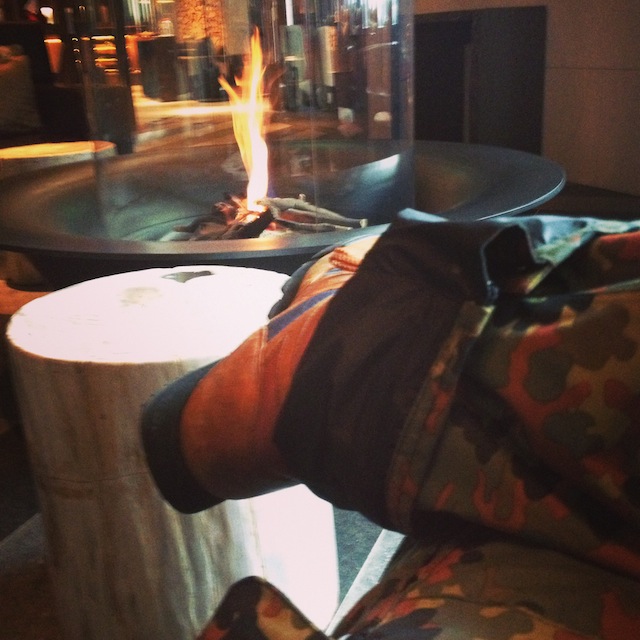This past weekend I was in Switzerland for work, checking out a new five-star hotel in the Swiss Alps village of Andermatt—yeah, my job’s not bad—and so I haven’t really been able to play any Magic. I was, however, able to get out on the slopes last Friday, and do something I rarely have the opportunity to do: ski.
I’m from Arkansas, and my family didn’t grow up going to the mountains for vacation; we went to the beach instead. So when I was in college and some of my ski-mad friends suggested we go to Breckenridge, Colorado, for Spring Break, I was skeptical but said yes.
Over about a week in Colorado, I strapped on skis for the first time, and learned the basics. By the end of our trip, I was proficient enough to have fun on the green runs, go a little fast, and not fall every five seconds. But then I didn’t ski again for, I dunno, seven years?
I lost a lot of the muscle memory I had learned. I’ve been skiing and/or snowboarding a couple more times since then, but that’s it. So when on this recent trip I was talking with the main guy about whether I was an intermediate or beginning skier, I hemmed and hawed before deciding to categorize myself as a beginner.
The other people who were in our group were decidedly way more beginner than I was, though—they could barely stay upright on their skis, much less actually ski—so after a quick hop down the bunny slope, I took the chairlift up the mountain by myself and started down a blue run (in Europe, blues are the easy trails).
For the most part I was able to do it—because most of the trail was really flat, without much need to carve and navigate terrain at any kind of speed. But down at the bottom of the trail there was a really steep section, which I just flat-out wasn’t able to ski. I carved left, carved right—and the speed and steepness got the better of me and I went down, struggling to get back up and do the same thing all over again, down to the bottom of the mountain.
Later on I took a chairlift all the way up to the top of the mountain, and kind of freaked myself out—it was blizzarding, almost white-out conditions, and I was up there seemingly by myself. The snow was really deep, I couldn’t see the route, and this trail—even though it was still a blue—consisted mostly of much steeper hills. I fell, and fell, and fell.
Eventually I made it back down to the middle of the mountain, and after some of the most delicious pasta and bread and Coca-Cola I’ve ever tasted (just because I was so hungry and exhausted), I started back out on the original, flatter blue run.
And I was bored (until I hit that final steep section, that is). I found myself thinking that the trails were far too extreme, either way too steep or way too flat. I didn’t feel like I was really able to practice, because I couldn’t find that perfect middle ground that was challenging but not too hard for me to do.
Later on, I was sitting out on the balcony of my hotel room in my robe, drinking a glass of wine and looking at the mountain, and thinking about the previous day of skiing. I found myself thining about how my experience earlier in the day was similar to—wait for it—Magic.
How’s that? Well, it reminded me of either playing in events that are too easy, or too difficult. (Although, at this point in my Magic career, I wouldn’t really say that there are any events that are too difficult for me to play in; I can ski black-diamond Magic trails, although I certainly have much, much more to learn on those trails.)
Rather, what I need to be concerned with is not wasting my time with events that are too easy. One way in which I’ve been doing this IRL, lately, is by adding Team Draft League to my regimen. Basically, it’s a league wherein teams of three draft against each other for eight weeks in a row, with a couple weeks of finals.
All of us in the league are good players, some better than others, but there are no turkeys. And while I really enjoy drafting at my local game store, you don’t have any control over who’s in your pod, which means that sometimes you can get matched up against players who are very new to drafting and don’t make for stiff competition.
And if you don’t have stiff competition, you don’t get better. Sure, you may lose more, but winning is not the only measure of improvement. In fact, as Mark Rosewater likes to say, you learn way more from your failures than your successes. Because, if you win, well—you did everything right … right?
The answer is almost certainly “no.” After all, as Philip Larkin wrote in his awesome poem “The Whitsun Weddings” (one of my all-time favorites, and which you should definitely read), “Sun destroys the interest of what’s happening in the shade.”
There is also a Magic Online component to this discussion, when it comes to deciding what you are going to play: a Swiss draft, a 4-3-2-2, or an 8-4. As you may or may not know, the middle draft format, 4-3-2-2, is bad value, because it pays out one prize pack fewer than the other two. Basically, that means you should never play 4-3-2-2s.
But what about Swiss or 8-4s? 8-4s are certainly where the better players are, but I actually disagree that the competion in Swiss drafts is significantly less experienced than in 8-4s. Sure, you’ll come across the odd player who’s running [casthaven]Messenger’s Speed[/casthaven] in a Swiss draft (meaning, a person who doesn’t yet know what they are doing), but in general I’ve found that more often than not my games in a Swiss draft are good and challenging, to a certain extent.
And anyway, I have to pick my spots where I can get them. 8-4s are stiff, and if you lose, you’re out. So when I am trying to draft after work, and I would like to get a solid three rounds in, doing a Swiss is often better value for me, because I know I’m going to play all three rounds, rather than drafting for 20 minutes, losing in 10, and finding myself in the weird horse latitudes of the night, wherein I have more time to play but not enough to start a new draft before bedtime.
Sure, the competition in a Swiss draft is not as exacting, but I think spending significantly more time “on the slopes” has its own value. So I go back and forth between Swiss and 8-4s, depending on my recent play, timing, and a number of other issues.
If you want to really improve your game, next time you play, think about whether or not the way in which you are playing is the best use of your time. Are you getting the most out of your draft? If not—if your terrain is not challenging enough (or, depending on what level you are at, too challenging)—you may want to seek a different play group or LGS (or even a different night at your LGS), or test out playing some different formats on MTGO.
In the meantime, good luck and have fun—and, if you get the chance to visit Andermatt, Switzerland, you definitely should do so. Go into town and try the roesti (the potato-based Swiss national dish) at the quaint and friendly Gasthaus zum Sternen. It’s a hell of a meal. And for whatever reason, straight Coca-Cola (cold with no ice) tastes amazing in the Alps. Trust me.
23/17 is a Hipsters of the Coast column focused on Limited play—primarily draft and sealed, but also cubing, 2HG, and anything else we can come up with. The name refers to the “Golden Ratio” of a Limited deck: 23 spells and 17 lands. Follow Hunter at @hrslaton.








